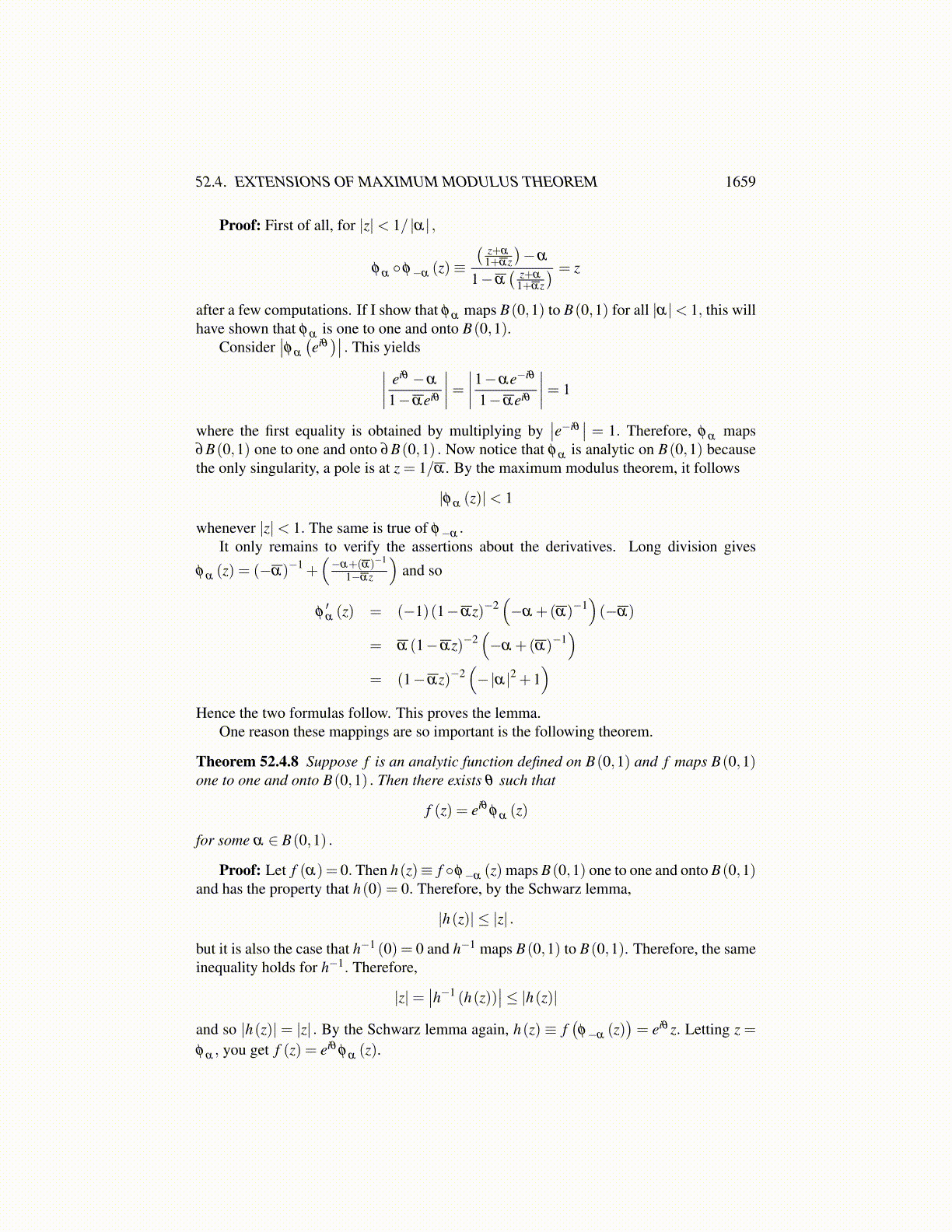
52.4. EXTENSIONS OF MAXIMUM MODULUS THEOREM 1659
52.4.2 Hadamard Three Circles TheoremLet 0 < R1 < R2 and suppose f is analytic on {z ∈ C : R1 < |z|< R2} . Then letting R1 <a < b < R2, note that g(z)≡ exp(z) satisfies
g : {z ∈ C : lna < Rez < b}→ {z ∈ C : a < |z|< b}
is onto and that in fact, g maps the line lnr+ iy onto the circle reiθ . Now let M (x) be definedas above and m be defined by m(r)≡maxθ
∣∣ f (reiθ)∣∣ .Then for a < r < b, Corollary 52.4.4
implies
m(r) = supy
∣∣∣ f (elnr+iy)∣∣∣= M (lnr)≤M (lna)
lnb−lnrlnb−lna M (lnb)
lnr−lnalnb−lna
= m(a)ln(b/r)/ ln(b/a) m(b)ln(r/a)/ ln(b/a)
and so m(r)ln(b/a) ≤ m(a)ln(b/r) m(b)ln(r/a) . Taking logarithms, this yields
ln(
ba
)ln(m(r))≤ ln
(br
)ln(m(a))+ ln
( ra
)ln(m(b))
which says the same as r→ ln(m(r)) is a convex function of lnr.The next example, also in Rudin [113] is very dramatic. An unbelievably weak as-
sumption is made on the growth of the function and still you get a uniform bound in theconclusion.
Corollary 52.4.5 Let Ω ={
z ∈ C : |Im(z)|< π
2
}. Suppose f is analytic on Ω, continuous
on Ω, and there exist constants, α < 1 and A < ∞ such that
| f (z)| ≤ exp(Aexp(α |x|)) for z = x+ iy
and ∣∣∣ f (x± iπ
2
)∣∣∣≤ 1
for all x ∈ R. Then | f (z)| ≤ 1 on Ω.
Proof: This time let φ (z) = [exp(Aexp(β z))exp(Aexp(−β z))]−1 where α < β < 1.Then φ (z) ̸= 0 on Ω and for η > 0
|φ (z)|η =1
|exp(ηAexp(β z))exp(ηAexp(−β z))|Now
exp(ηAexp(β z))exp(ηAexp(−β z))
= exp(ηA(exp(β z)+ exp(−β z)))
= exp[ηA(
cos(βy)(
eβx + e−βx)+ isin(βy)
(eβx− e−βx
))]and so
|φ (z)|η =1
exp[ηA(cos(βy)
(eβx + e−βx
))]Now cosβy > 0 because β < 1 and |y|< π
2 . Therefore, limsupz→∞ | f (z)| |φ (z)|η ≤ 0 ≤ 1and so by Theorem 52.4.1, | f (z)| ≤ 1.